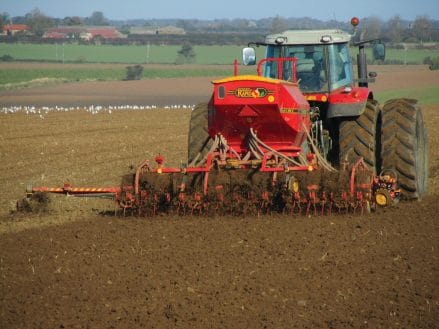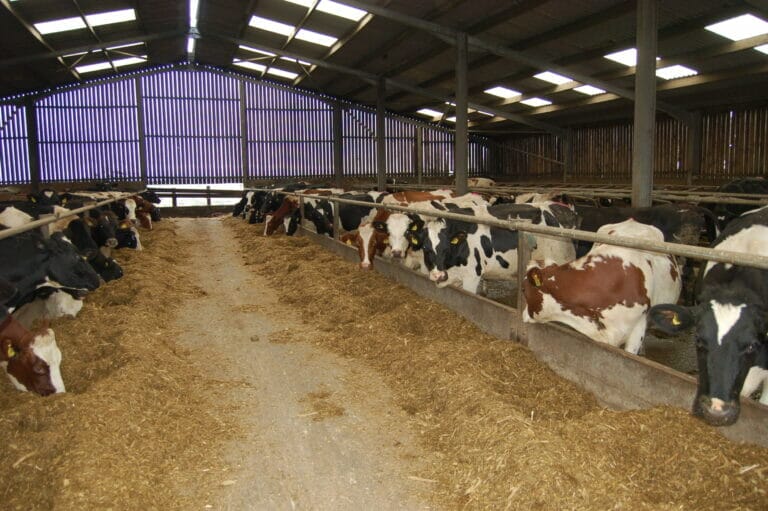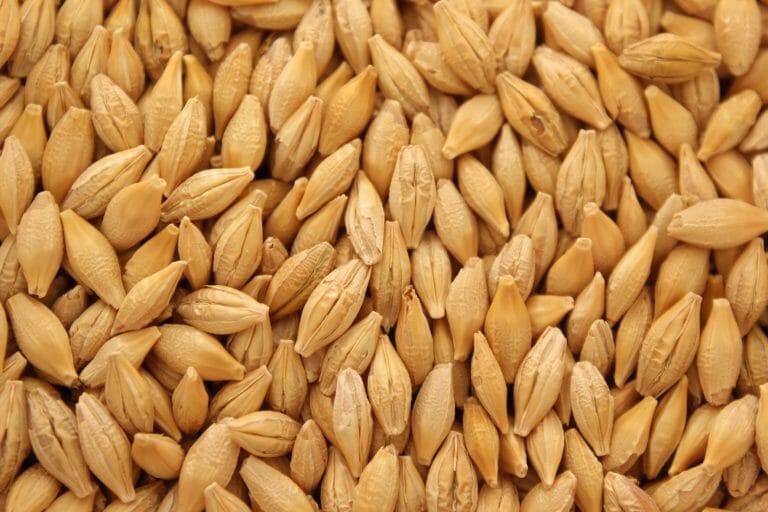
As spring barley drilling gets underway in some areas, Limagrain UK’s arable technical manager, Ron Granger, outlines six ways to get the most from the crop this season.
- 1. Understand end market/ contract requirements
End user requirements will influence many agronomic decisions, particularly nitrogen strategy, so it is essential growers are clear about the quality criteria that must be met, says Mr Granger.
“Depending on the locality and the opportunities for selling to different end users or export markets, the barley crop you grow – and the agronomic inputs required – will be determined by the sector you target.”
This is particularly true for those dependent on hitting a certain grain nitrogen percentage to achieve the contract premium, notably distilling, which requires 1.65% N or lower, brewing 1.65-1.85%, and grain distilling at 1.85%+. Grain nitrogen is not a concern for animal feed.
- 2. Choose the right variety
In many instances, variety choice is also determined by the end user or contract chosen.
However, for those still to decide what to grow, Mr Granger recommends considering one of the dual use varieties, such as LG Diablo, which has good yield performance, with several end market opportunities, offering an advantage over many varieties now listed.
“Newer recommended varieties certainly offer higher yield potential, and if contracts are offered, then they are certainly worth considering. Dual use varieties offer growers flexibility for the distilling, brewing and feed market sectors.”
- 3. Wait for good drilling conditions
Limagrain trials show earlier drilling in spring can improve yield potential, however, this is mainly only possible on lighter, more free-draining land, that will dry and warm quicker than a heavier soil type.
“Early drilling will significantly increase disease risk, so consider more disease resistant varieties for this situation,” says Mr Granger.
“Generally, patience is required to wait for the right window of opportunity, when both the weather and soil conditions allow good seedbeds to be created with rising soil and air temperatures, to ensure rapid emergence and establishment, with continued plant growth.
“Certainly, we saw the value of earlier drilling in spring 2022, with most growers drilling earlier than usual in most regions. This, along with upfront nutrition before the drought hit, was certainly part of the reason why growers achieved higher yield potential than originally anticipated.”

Ron Granger
- 4. Optimise seed rate
A survey of more than 100 growers by Limagrain last year showed half (49%) of growers were typically sowing spring barley at 300-350 seeds/m2, and most (76%) targeting a yield of 8 t/ha.
This rate appears to be about right when drilling into good conditions, however Mr Granger says seed rates must be tailored to individual situations.
Limagrain trials comparing variety seed rates over various seasons and regions suggest that with more vigorous, higher tillering varieties, such as LG Diablo, the optimum seed rate is 350 seeds/m2 when drilling into ideal conditions around mid-March.
However, this should be adjusted up or down depending on the weather, seedbed quality, moisture availability, drilling date, and the growers’ own experience on each site, says Mr Granger.
“Late-sown crops inevitably produce fewer tillers and therefore fewer ears, which must be compensated for by increasing seed rate.”
A lower rate of 300-325 seeds/m2 could suffice if drilling into an “onion bed” in March, but when forced to drill into April, due to the weather, or agronomic reasons, such as black-grass control, pushing rates up to 400 to 450 seeds/m2 may be more appropriate to achieve the optimum final ear number and a competitive crop in a black-grass situation, he advises.
- 5. Maintain tiller number
Once crops are established, Mr Granger says the best way to achieve high spring barley yield potential is to ensure high final ear counts. The AHDB Barley growth guide suggests final target ear population should be around 775 ears/m2.
“It is interesting to note that in 2019, higher yield potential was achieved from even higher final ear counts, approaching 800/m2 by harvest. An 8-9 t/ha crop needs around 800 ears/m2, which at a 350 seeds/m2 rate, equates to around 2.5-3 tillers per plant at harvest.
“However, experience shows optimal tiller and ear counts may be underachieved in many situations, meaning crops fall short of achieving their full yield potential.”
The biggest issue is often the weather, Mr Granger acknowledges. Drought conditions will cause tiller loss, so he says to ensure numbers are high enough at the outset by selecting high tillering varieties, using an appropriate seed rate, and driving establishment and early rooting by implementing a balanced nutrition regime early in the crop’s development.
“Traditionally, spring barley was often seen as a lower input crop, with growers reluctant to increase nitrogen application rates in fear of exceeding maltsters grain nitrogen limits. However, LG trials over many seasons of testing, indicate that using higher N rates can be beneficial.”
In the trials, a standard seedbed application of 120 kg N/ha was compared to a split nitrogen application of 150 kg N/ha, with the additional 30 kg applied at late tillering. This resulted in a yield benefit of 0.4-0.5 t/ha over a single seedbed dose, with little or no impact on grain nitrogen.
“Higher yielding varieties respond positively to higher nitrogen inputs, due to their increased yield potential and dilution of grain nitrogen content.”

6. Optimise other nutrients
Alongside nitrogen, optimising other macronutrients, such as phosphate, potash, magnesium and sulphur, has proven beneficial to tiller retention and final yield.
These should be applied in the seedbed or soon after drilling to promote strong rooting and early plant growth, Mr Granger advises.
“Tissue analysis of the young growing crop can help identify any shortfalls in nutrition before visible symptoms appear, and is a relatively inexpensive way of targeting a high yielding crop.”
Additional micronutrients, such as manganese, zinc, copper, iron, and boron, applied at the stem extension phase into flowering, are also useful, ensuring a healthy crop and good ear fertility, whilst also helping secure high grain number and maximum yield potential. “Apply these independently with other key inputs, or as a multi-nutrient product.
“Spring barley is a fast-growing crop and if key nutrients are deficient at any time, yield potential will be compromised.”
Also consider early growth regulator applications on crops to promote rooting and strong uniform tillering, he adds.
At least two fungicides are recommended to maintain tiller number and healthy plants, including the awns and maximum grain development. Typically, the first application is at GS 25-31, with the second targeted between GS 39-55.
“Of course, if the season dictates a low disease pressure, or a drought situation, flexibility in fungicide input and timing should be adjusted for the final yield potential in hand.
“Spring barley can move through growth stages quickly, so close monitoring of the growing crop is essential.”
For more info, see Limagrain’s Spring Barley Agronomy videos
































